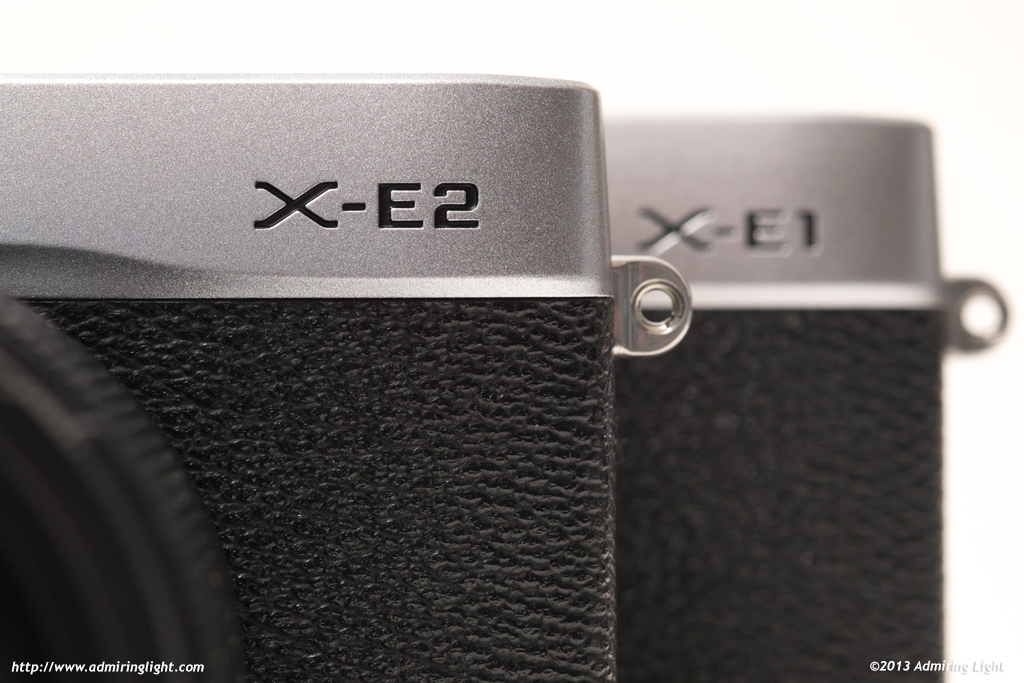One of the big questions with the release of the new Fujifilm X-E2 is whether existing X-E1 users should consider upgrading to the X-E2. If you’ve read my review of the X-E2, you know that I feel that the improvements the X-E2 offers are substantial enough to warrant an upgrade, though this will vary for each user. One area that is easily measurable is the general performance of writing images to an SD Card. Anyone who’s had an X-E1 and has tried to shoot multiple burst photos with the camera knows that it can bog down a bit while writing to the card. Given that it also locks up the magnify function when using manual focus while writing, this can be a fairly big deal.
To get an idea of the performance increase with the X-E2 vs the X-E1, I shot high-speed burst mode using RAW to fill the image buffer and then timed the release. Since the X-E2 uses 14-bit RAW files and the X-E1 uses 12-bit RAW files, the X-E2 files are larger, but the X-E1 can handle a few more photos in burst mode before filling. The X-E2’s RAWs are 30% larger (32.2MB vs 24.9MB) than the X-E1s, while the X-E1 can shoot 11 frames vs the X-E2’s 8 frames before filling the buffer… Total write size in the buffer is approximately the same, though the X-E1 is writing 6% more data…if write speeds are equal, we’d expect a 6% performance improvement on the X-E2. The third column in the table below are extrapolated times based on this difference. I think both share an approximately 280MB buffer.
I also tested three different SD cards. First, a SanDisk Ultra, “Class 10” 15MB/sec card; Second, a SanDisk Extreme UHS-1, 45MB/sec card; Finally, a PNY Elite Performance UHS-1, 90MB/sec card.
Here are the results:
| SD Card/Camera | X-E1 | X-E2 | X-E2 (+ 6%) |
|---|---|---|---|
| SanDisk Ultra 30MB/sec |
55.6s
|
43.7s
|
46.5s |
| SanDisk Extreme 45MB/sec |
25.7s
|
9.3s
|
9.9s
|
| PNY Elite Performance 90 MB/sec |
22.9s
|
7.2s
|
7.7s
|
Times required to clear image buffer after high-speed RAW image burst
There are two things evident here. First, getting a UHS-1 card is a good idea for both cameras. The slower SanDisk ultra card is very slow to write in both cameras, though the X-E2 enjoys a good edge even with the slower card. With the UHS-1 cards, the X-E1 is able to write nearly twice as fast as with the slower card. The X-E2, however, is just massively faster, clearing the buffer 2.7 times faster than the X-E1 with the 45MB/s card and a whopping 3.2x faster with the 90 MB/sec card.
So, it seems Fuji was a bit conservative when they said the X-E2 had write times 1.8 times faster than the X-E1. In practice, when the card isn’t a limiting factor, it’s closer to three times faster.
If write times are important to you, the X-E2 clearly offers a big upgrade. Also, if you’re using slow SD cards, go out and get some nice fast UHS-1 cards and you’ll see a significant improvement with either camera.
As an aside, I know many readers will want to have timings for autofocus, but it’s just not something I can do accurately. The human error in timing autofocus would be too great to get a solid number on the speed improvements.






Leave a Reply